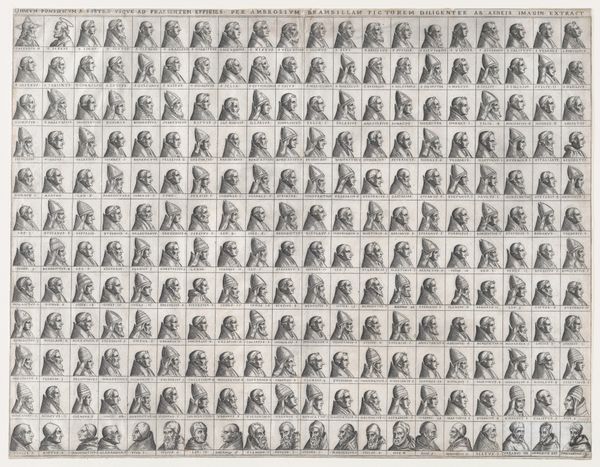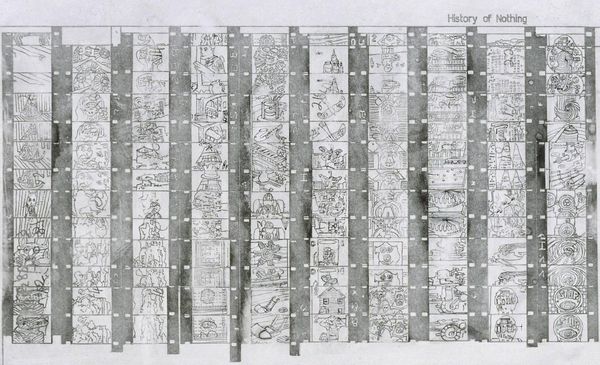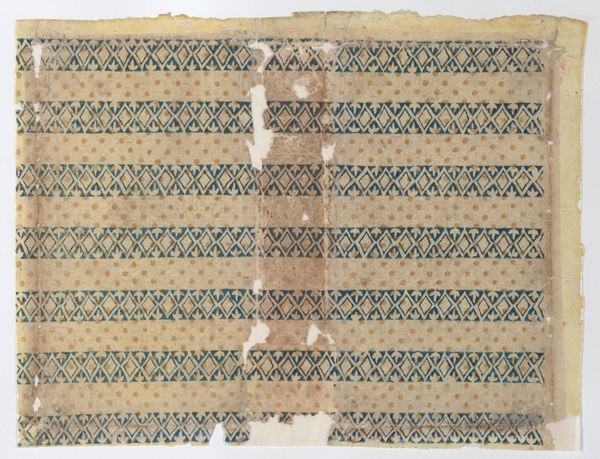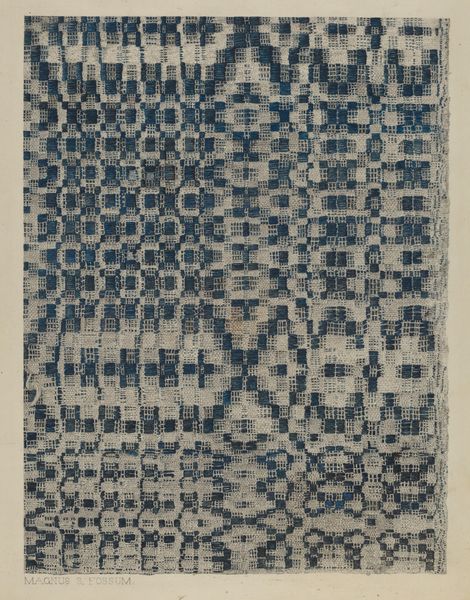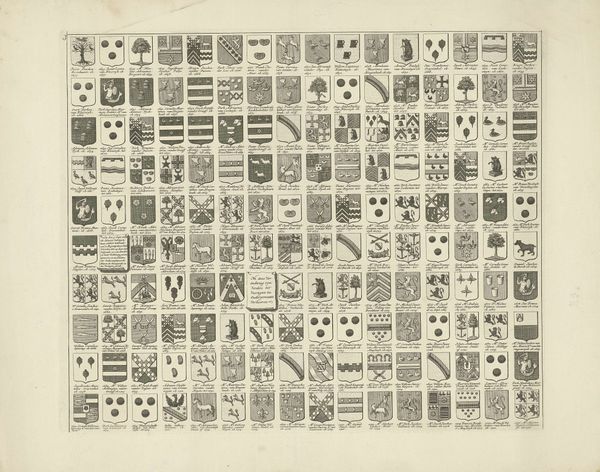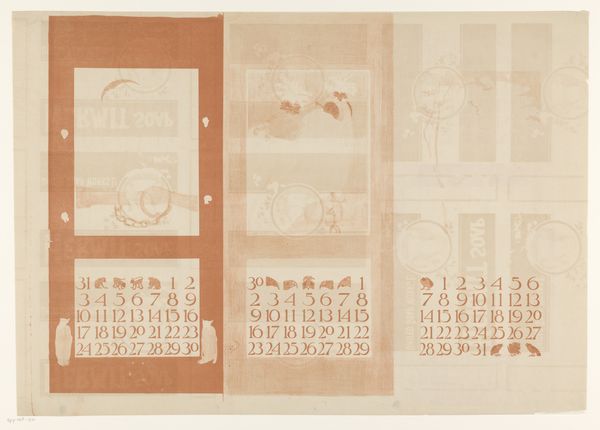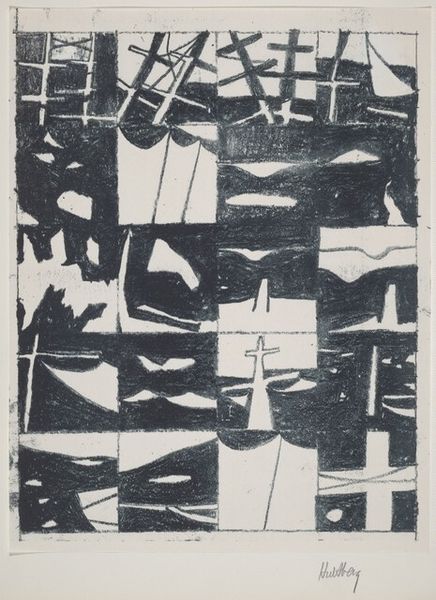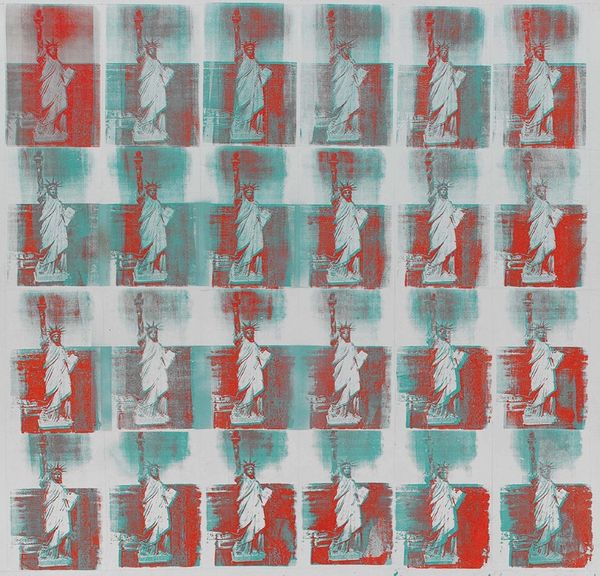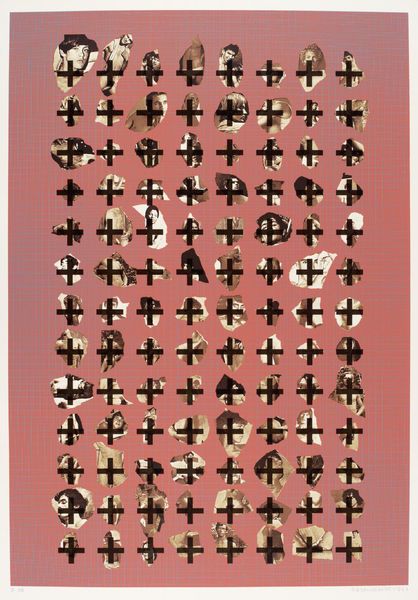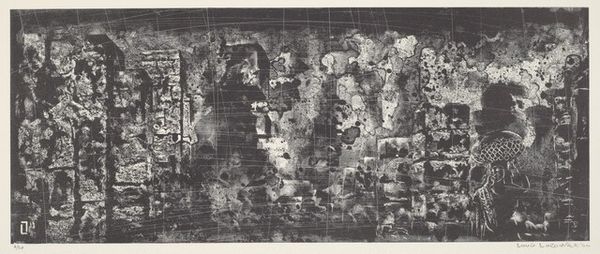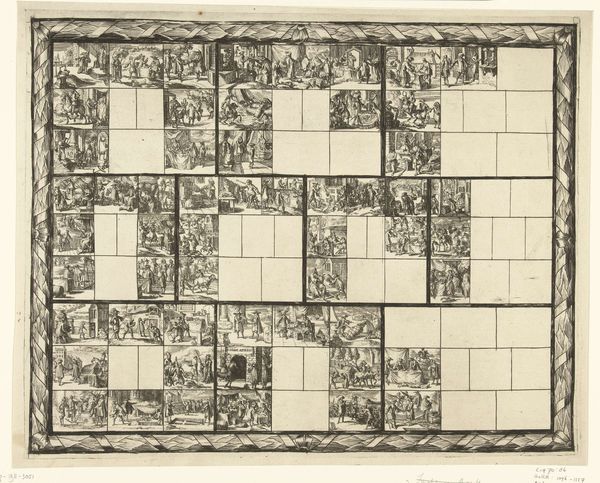
Coupon zwart bedrukte zijde met silhouetten van mensen en planten 1916
0:00
0:00
dagobertpeche
Rijksmuseum
mixed-media, textile
#
mixed-media
#
art-nouveau
#
pattern
#
textile
#
figuration
#
repetitive shape and pattern
#
geometric
#
pattern repetition
#
imprinted textile
#
repetitive pattern
Dimensions: height 53 cm, width 90 cm
Copyright: Rijks Museum: Open Domain
Editor: This is "Coupon zwart bedrukte zijde met silhouetten van mensen en planten," or "Sample of black printed silk with silhouettes of people and plants," from 1916 by Dagobert Peche. The material, silk, has a lovely sheen, and the contrasting black figures really pop. What stands out to you in terms of its materials and production? Curator: As a materialist, I'm immediately drawn to the textile itself. Silk in 1916 signifies luxury and global trade. Who had access to this, and under what labor conditions was it produced and printed? The Art Nouveau style often blurred the line between fine art and design. This piece challenges those traditional hierarchies; how does this “coupon,” a sample, destined perhaps for dressmaking, question notions of high art when so often textiles are marginalized as decorative or ‘craft’? Editor: That’s a great point about challenging hierarchies! I hadn’t thought of the 'coupon' aspect like that. So, thinking about its use...what impact do you think its function has on its artistic interpretation? Curator: I believe the repetitive patterns were made for mass production, even though silk is typically considered something "high end". Notice how the artist has utilized both human and vegetal motifs within this printed pattern. Considering labor is crucial. Who would have worn it? Who profited from it, and at what cost to those producing the raw materials and manufacturing it? How are we complicit, even now, as consumers, viewing this object through a historical lens? Editor: It really makes you think about the layers involved, doesn't it? Curator: Absolutely. The visual pleasure we might derive needs to be interrogated through an understanding of its socio-economic production. These processes are really deeply embedded and inherent within the aesthetic quality. Editor: I’ll definitely look at textiles differently now! Thanks for sharing your perspective.
Comments
No comments
Be the first to comment and join the conversation on the ultimate creative platform.
